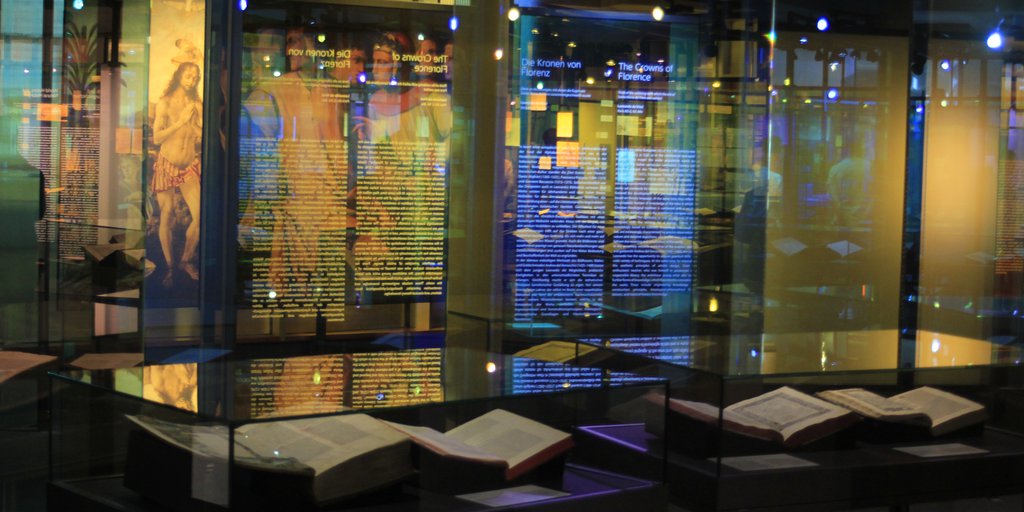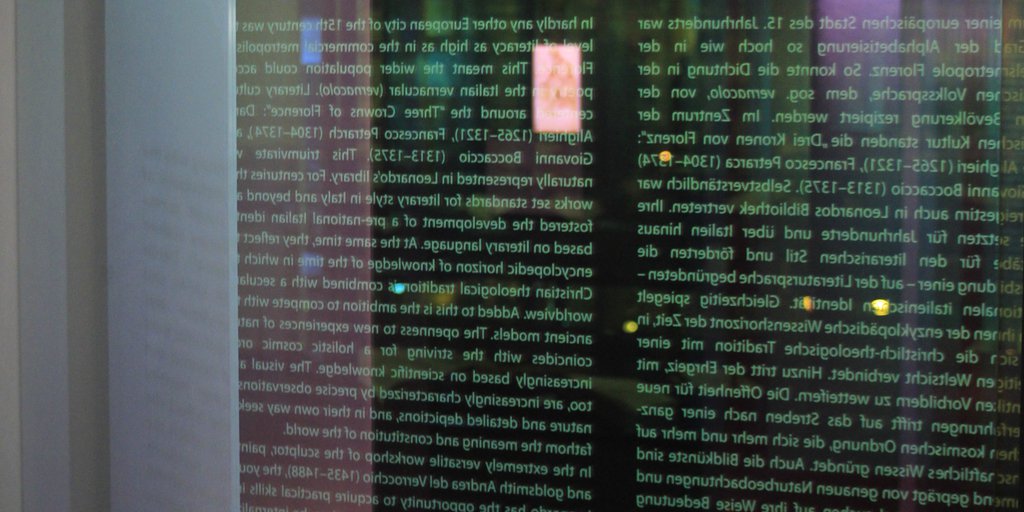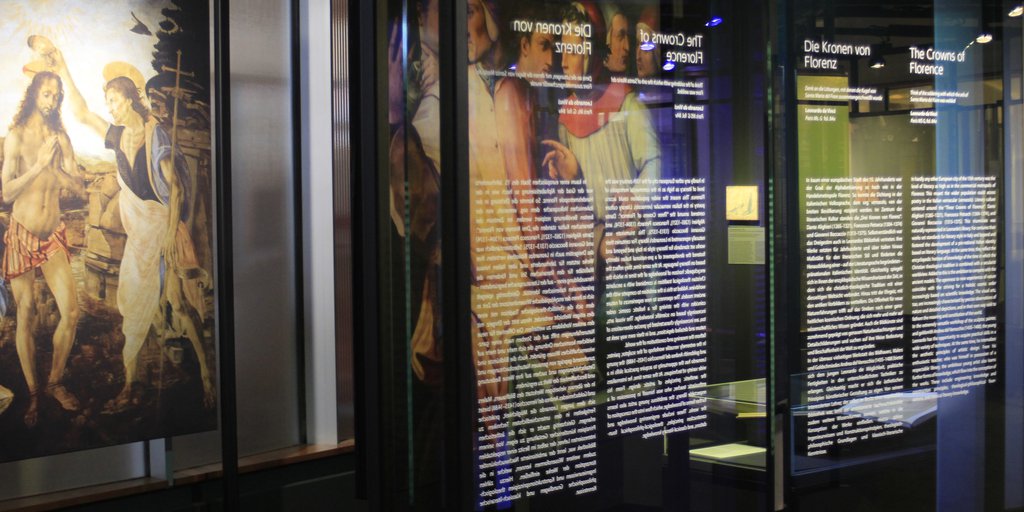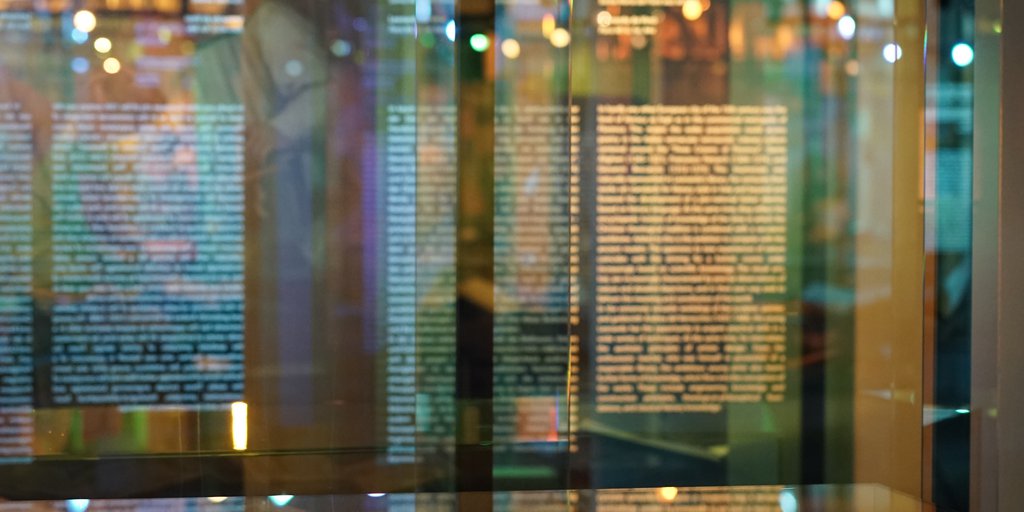
The Crowns of Florence <
Think of the soldering with which the orb of Santa Maria del Fiore was welded.
Leonardo da Vinci
Paris Ms. G, fol. 84v. Translation: Elizabeth Hughes
In hardly any other European city of the 15th century was the level of literacy as high as in the commercial metropolis of Florence. This meant the wider population could access literature in the Italian vernacular (vernacolo). Literary culture centered around the “Three Crowns of Florence”: Dante Alighieri (1265–1321), Francesco Petrarch (1304–1374), and Giovanni Boccaccio (1313–1375). This triumvirate was naturally represented in Leonardo’s library. For centuries their works set standards for literary style in Italy and beyond and fostered the development of a pre-national Italian identity based on literary language. At the same time, they reflect the encyclopedic horizon of knowledge of the time in which the Christian theological tradition is combined with a secularist worldview. Added to this is the ambition to compete with the ancient models. The openness to new experiences of nature coincides with the striving for a holistic cosmic order increasingly based on scientific knowledge. The visual arts, too, are increasingly characterized by precise observations of nature and detailed depictions, and in their own way seek to fathom the meaning and constitution of the world.
In the extremely versatile workshop of the sculptor, painter, and goldsmith Andrea del Verrocchio (1435–1488), the young Leonardo has the opportunity to acquire practical skills in a wide variety of techniques. At the same time, he internalizes the aesthetic principles of artistic design. From his enthusiastic teacher, who was himself in possession of a respectable library, the ambitious young artist also learns further forms of knowledge, which flow into the conception of the works. These include engineering knowledge and construction principles, theological-philosophical foundations, and classical literary knowledge.
Leonardo's Berlin Library: Section 3 <
 | 23.
Trionfi e sonetti Commented by Bernardus Ilicinus and Franciscus Philelphus. Milan: Ulrich Scinzenzeller, 1494 |
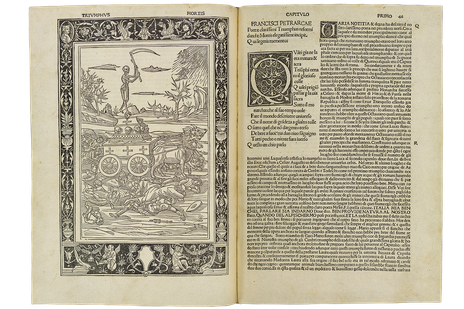
While Il Canzoniere, a collection of poems consisting mainly of sonnets, is indisputably Petrarch’s greatest work, the impact of his Triumphs, particularly for visual art, should not be overlooked. Using the form of a didactic poem, he describes the visionary dream of triumphal processions celebrating the victory of an allegorical figure (mortal love, chastity, death, fame, time, and eternity) over the whole of humanity. While it is true that Leonardo’s early notes suggest that he was initially not an admirer of Petrarch’s poetry, later notes increasingly document that he came to appreciate Petrarch’s ideas about time and transience.
References
Bambach, Carmen C. 2019a. Leonardo da Vinci Rediscovered. Vol. 2: The Maturing of a Genius 1485–1506. 4 vols. New Haven / London: Yale University Press, 28–30.
Idem. 2019b. Leonardo da Vinci Rediscovered. Vol. 4: Scholarly Apparatus to Volumes One, Two, and Three. 4 vols. New Haven / London: Yale University Press, 16.
